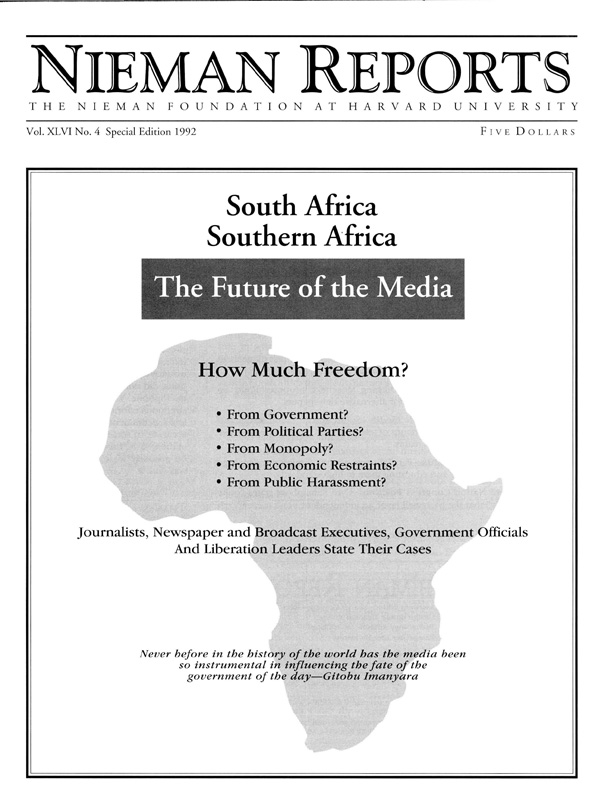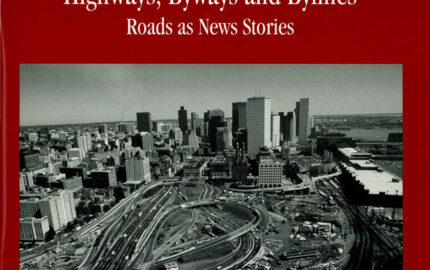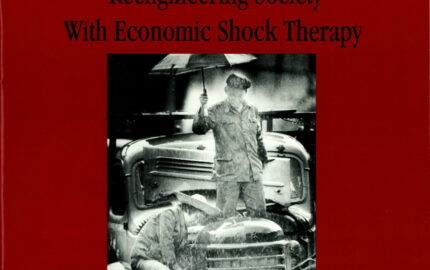- “Background and Result”—Bill Kovach explains the timing of the meeting and initial impact
- “Keynote Address”—Gitobu Imanyara of Kenya implores the media to fight
- for restoration of basic rights.
- “Current Media Experience”—South Africa is marked by physical attacks on journalists as well as partial easing of government rules; Zimbabwe’s independent Financial Times scores victories.
- “Limits on Freedom”—In Mozambique, even journalists don’t know their rights. In South Africa, a call for indoctrinating the public on freedom.
- “The Nationalist Government’s Position”—In Mozambique, even journalists don’t know their rights. In South Africa, a call for indoctrinating the public on freedom.
- “Is Democracy Possible Without an Independent Media?”—American,
- Namibian and South African journalists agree that the media must be
- strengthened to perform its role
- “Media Ownership and the Flow of Information”—American,
- Namibian and South African journalists agree that the media must be
- strengthened to perform its role
- “The Inkatha Position”—Mangosuthu Buthelezi outlines party’s goals to achieve much greater access to the news in South Africa.
- “The Pan Africanist Position”—Dikgang Moseneke proposes limits on group ownership and subsidies for alternative newspapers.
- “The Impact of the Electronic Media”—South African union leader and broadcast chief discuss importance of television and radio; CNN executive notes fears of foreign video teams.
- “Future Media Participants”—Panel discusses ways of training wider range of writers and editors and educating them in high standards.
- “The African Nation Congress Position”—Cyril Ramaphosa states “quite categorically” that the party will favor an independent press even after it achieves power.
- “Summary”—What was accomplished and what was not.
Special Issue 1992: South Africa and Southern Africa: The Future of the Media
List of Articles

South Africa and Southern Africa: The Future of the Media


